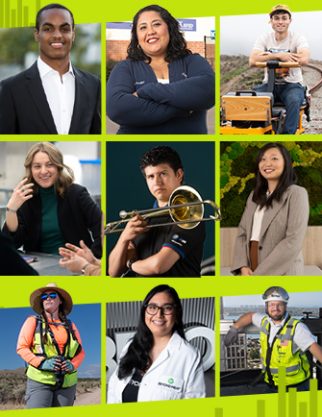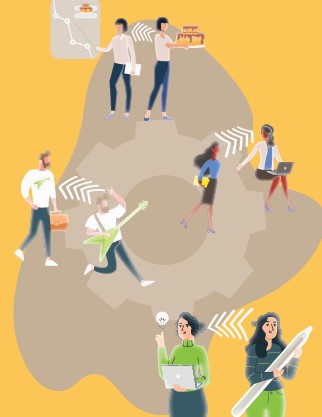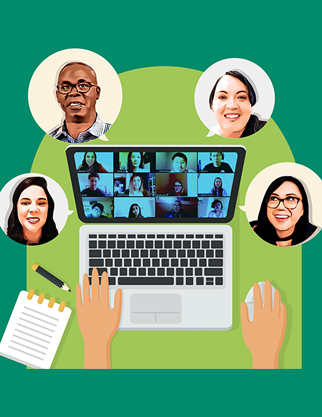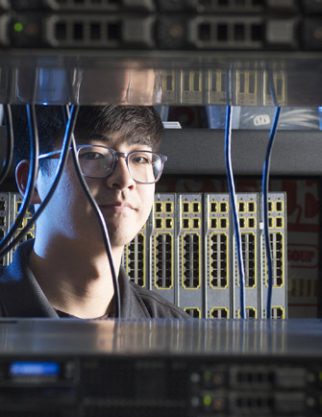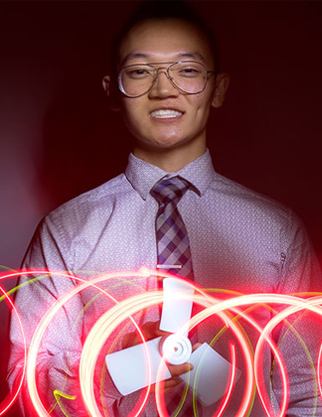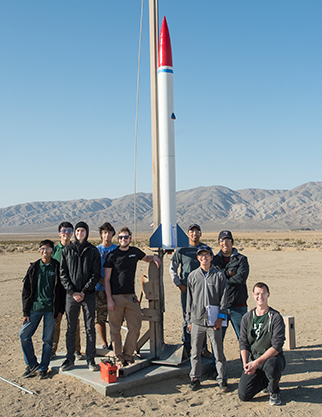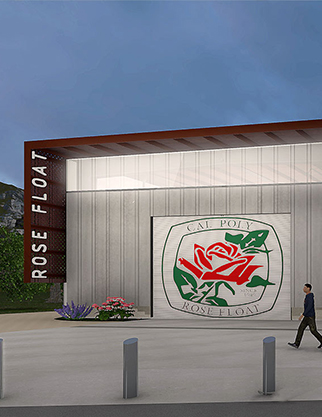Professor Kenneth Lamb can trace his personal mission to help students in any way possible back to Paraguay, a small land-locked country tucked between Brazil and Argentina.
Lamb was enrolled at Utah State University, with the plan to study aerospace engineering, when he decided to take a couple of years off to do missionary work through The Church of Jesus Christ of Latter-day Saints.
The then-teen arrived in Paraguay with basic Spanish skills he learned in high school and a willingness to work 10-hour days doing a little bit of everything — talking to the residents about religious topics, fielding questions about the complexities of life and relationships, and fixing roofs. He returned home in Henderson, Nevada, fluent in Spanish, knowing some Guarani (the language of the indigenous Paraguayans) and ready to continue his studies with his personal mission solidified.
“That was a transformational experience being away from home and being in a foreign world,” says Lamb, now faculty director of the Student Innovation Idea Labs (SIIL) and an associate professor of civil engineering at Cal Poly Pomona.
It made me realize that people aren’t so different regardless of what country you are in. It also helped me realize that I would like to do something to help people.
A Return Home
Lamb later transferred to the University of Nevada, Las Vegas and switched from aerospace to civil engineering after working as an intern at GCW Engineering, a local firm that focused on civil engineering and surveying projects.
“I hadn’t taken any of my engineering classes yet, but the company was shorthanded,” he says. “They said, ‘Kenneth, can you keep pressing buttons on the computer until we tell you to stop?’”
Lamb stayed with the firm after college, conducting flood control analysis and working on flood control infrastructure projects. It was an opportunity to jump right into engineering, which has had a profound influence on how he works with students.
“At the time, I didn’t realize how much I liked learn-by-doing, but that has informed how I teach,” he says. “We think we have to tell students everything they need to know before they start doing something, and that’s not true at all. You can get them going and that should spur good questions.”
With an economic crisis looming, Lamb left his job in 2007 to pursue a doctorate degree at UNLV. He had previously earned a master’s degree in civil engineering through a distance learning program at Norwich University in Northfield, Vermont in 2006 while working at the firm. After his experience in Paraguay and the opportunity to train new engineering hires at GCW and help them transition from students to professionals, Lamb knew that teaching was what he really wanted to do.
A Dream Job
As he was finishing his doctorate in civil engineering in 2011, Lamb applied for teaching positions at 38 universities, and Cal Poly Pomona was his first choice. A couple of professors encouraged him to apply, and Lamb knew of the university’s reputation as an engineering powerhouse because UNLV often vied against it in competitions.
“When they offered me the job, I was floored because I thought there was no way I deserve this job,” he says. “In my mind, the Cal Poly Pomona civil engineering program is miles ahead of what I got as an undergraduate. To be teaching here is a dream.”
Lamb arrived on campus in fall 2011. Not long after he began teaching, he met Olukemi Sawyerr, associate vice president of academic innovation, and Winny Dong, faculty director of the Office of Undergraduate Research. Sawyerr and Dong were co-teaching the E-STEAM (Entrepreneurship in Science, Technology, Engineering, Arts and Mathematics) course, which allowed business and engineering students to collaborate on a project.
 Professor Kenneth Lamb works with a student at the water flume in the hydraulics lab in the Engineering Lab Building in 2016.
Professor Kenneth Lamb works with a student at the water flume in the hydraulics lab in the Engineering Lab Building in 2016.
In 2018, Sawyerr selected him as interim director of SIIL, and he received the permanent position in 2019.
“He’s very student centered. It was not about him, his research or his reputation. He cared about the students, and that was very important to me,” Sawyerr says. “We have a moral obligation to make sure our students are successful.”
The importance of supporting student success through SIIL programs also has not been lost on donors. Professor Emeritus Ed Clancy (PhD), a former CPP department head and faculty member in engineering from 1982 to 2007, and his wife, Nancy Tappan Clancy, made a multi-year commitment in December to the University Library to establish the Tappan Clancy Innovation and Entrepreneurship Fund in support of the library and the SIIL’s Maker’s Studio.
The fund will be used to pay for the studio’s programming, including additional grants for entrepreneurship and innovation, as well as providing seed funding for startup and spin-out grants.
“I am doing this because I believe in libraries and how much they help innovators learn the tip of the spear of knowledge,” says Clancy, who is also a patent attorney and has served as a program director at the National Science Foundation.
Fostering Leadership
In spring 2021, a working group led by Sawyerr and Tari Hunter, the director of the Office of Student Life and Cultural Centers, will make final recommendations on which platform to adopt for a new university-wide alternative learning credential program in which students can earn badges for acquiring skills, such as team building, leadership or project management. Lamb, who is a member of working group, created a similar badge program in the College of Engineering, but the campus-wide effort will reach more students and give them opportunities to collaborate with peers from other colleges.
“At the university level, we want to take some of the training students get from the BroncoLEAD workshops and bring that into the classroom,” Lamb says.
With engineering, for example, there is no room in the schedule for a leadership class. So we are looking at how we can get more of those leadership experiences into the hands of the students.
The Engineering Leadership Program requires students to take 30 to 65 hours of training to earn a badge. In addition to participating in Bronco Lead, a campus-wide leadership program, engineering students also take engineering-related workshops in project management, teamwork and their capstone project. Students develop as leaders across four domains: self-awareness, team awareness, project awareness, and their ethic.
The idea is to encourage students to take what they learn in Bronco LEAD and bring those skills into the classroom, says Lamb, who has benefited personally from leadership training.
Established programs, such as Learn Through Discovery, an initiative that gives students a signature polytechnic experience (PolyX) through research, innovation and/or community engagement, can develop their own badges to recognize students’ experiential learning.
Teaching Confidence
Lamb and the SIIL have introduced an entrepreneurship badge, starting with a bronze badge for completing the training on how to create a start-up. Students who start a business can earn silver and those who secure investors will be designated gold.
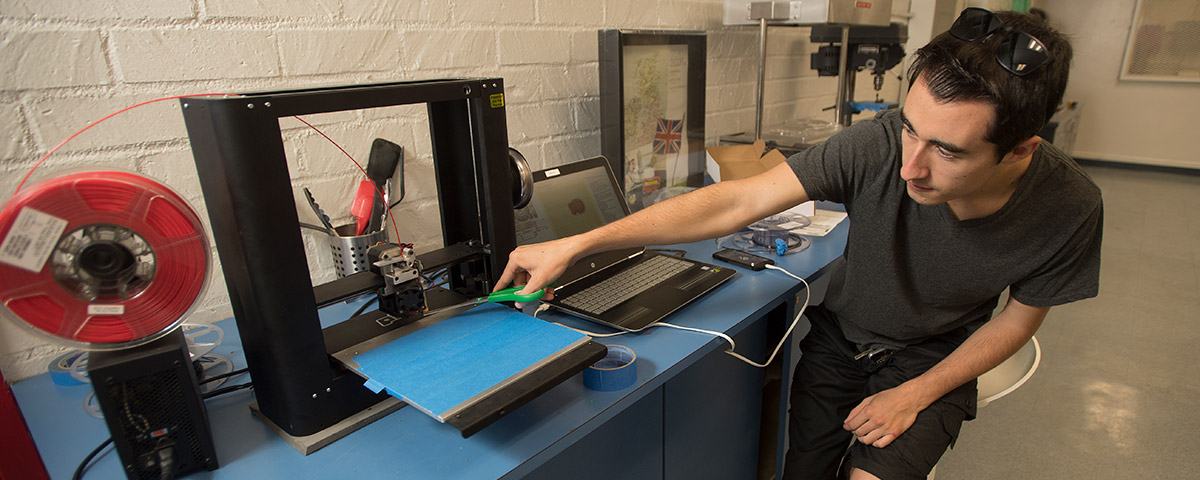 Student Tucker Dunbar readies a 3D printer in 2018 at Innovation Orchard, a shared makerspace at Ganesha High School.
Student Tucker Dunbar readies a 3D printer in 2018 at Innovation Orchard, a shared makerspace at Ganesha High School.
The COVID-19 pandemic has been tough on the SIIL program, which emphasizes in-person meetings and utilizing specialized equipment and makerspaces to do hands-on work. Not long after classes switched to virtual in 2020, Lamb coordinated with the Bronco Makers Club to establish a virtual space for students to share their ideas and creations, as well as receive input and support.
It’s a subtle but important pivot to show that the SIIL program isn’t just about providing tools, equipment and lab spaces. It’s about creating a community to give students an outlet to harness their creativity, showcase their technical abilities, but more than that, to build self-assurance around problem-solving.
“What the Student Innovation Idea Labs can do for students is to break through this idea that there’s only one right way of doing something,” Lamb says. “If they are strong in creation and innovation skills, they will be faster at identifying the opportunities to find multiple right answers. They will have that confidence.”
